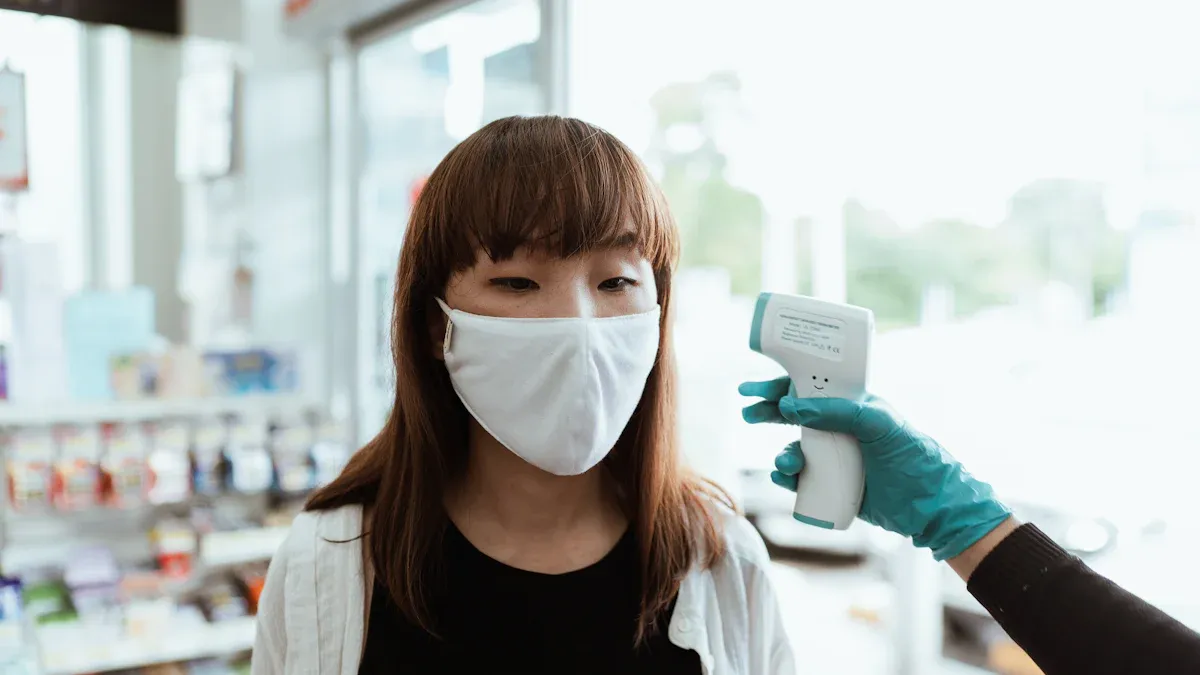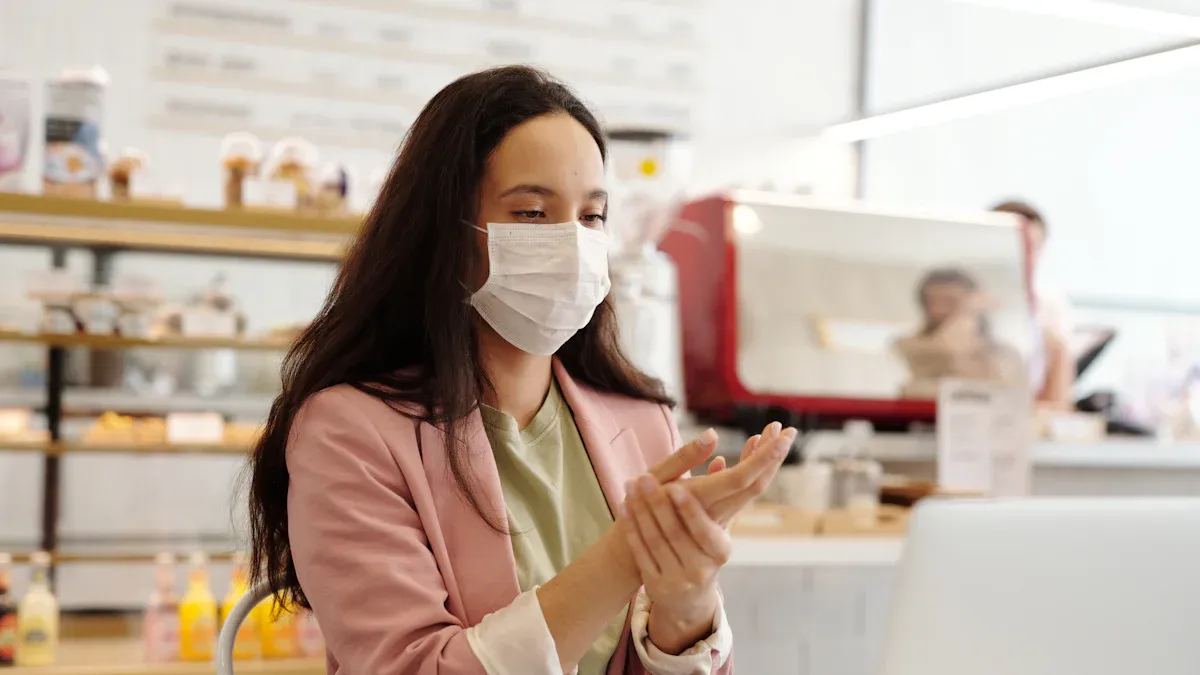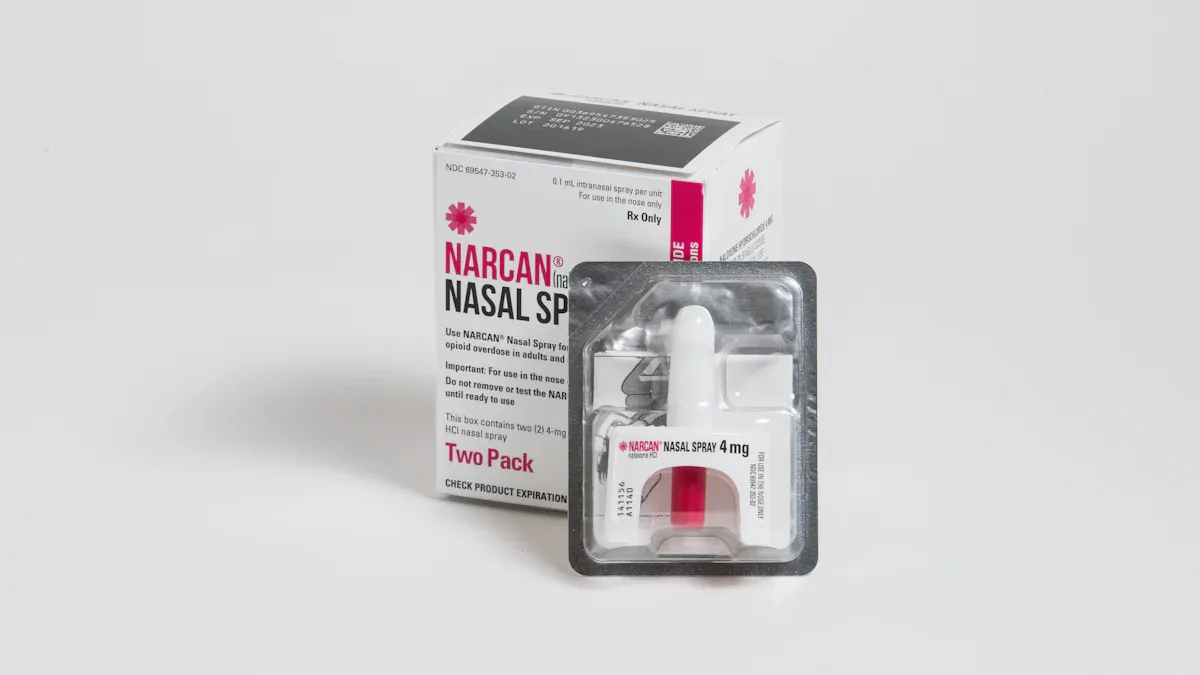Front lines heroes in stores fighting opioid crisis

Retailers are on the front lines of the opioid crisis. They are ready to help people in their communities. Naloxone lets retail workers save lives in emergencies. Staff learn how to use this medication. They respond with confidence. Community engagement raises awareness. It also brings hope to people.
Every action from these heroes makes the neighborhood safer and stronger. Support and legal protections help them keep saving lives.
Key Takeaways
Retailers help fight the opioid crisis by selling naloxone in stores. Naloxone can save lives by stopping overdoses. It gives hope to families who need help.
Training store workers to respond to overdoses is very important. It helps them act fast and feel sure during emergencies. This keeps everyone safe in the store.
When retailers teach the public, it helps people understand opioid use better. Sharing facts about naloxone makes people more likely to get help. It also helps keep the community safe.
Working with health groups and police makes retailers' work stronger. These partnerships build a better support system for people in need.
People in the community can help by asking stores about naloxone. Saying thank you to retailers also helps. Every small thing people do makes the neighborhood safer.
In-store actions

Naloxone availability
Retail stores help many people in their towns. They keep naloxone in stock for anyone who needs it. Naloxone can stop opioid overdoses and save lives. Retail workers show bravery and kindness by giving out this medicine.
In Kentucky, 5.0% of stores sold naloxone over the counter.
In New York, 8.6% of stores had naloxone for sale.
In some states, up to 9% of stores sold naloxone.
These numbers show things are getting better. But more stores need to help. Each store with naloxone gives hope to families and people who face opioid emergencies.
Tip: Ask your local store if they have naloxone. Your question might help others and save lives.
Overdose response training
Retail workers help people every day. They get trained to act fast and stay calm during an overdose. Good training teaches important steps:
Spot signs of opioid overdose.
Check if the area is safe before going in.
Wear gloves and other safety gear.
Know when it is not safe to go in.
Give naloxone and see if more is needed.
Give first aid or CPR if needed.
Help with symptoms like anger or confusion after naloxone.
Training helps staff protect themselves and others. It makes stores ready to help. Stores that train workers show they care about their communities.
Public education efforts
Stores do more than sell things. They teach people about opioid safety and how to prevent overdoses. Many stores put up signs and flyers near the pharmacy or checkout. These explain how naloxone works and why it is important.
Flyers and posters share facts about opioid dangers.
Staff answer questions and help customers find resources.
Some stores hold events or work with health groups.
Teaching the public helps remove shame. It helps people ask for help and learn about overdose prevention. Retail workers inspire others to make their communities safer and healthier.
Front lines partnerships
Collaborations with health organizations
Retailers work with health groups to fight the opioid crisis. They team up with clinics and recovery centers. These partnerships help stores offer more than naloxone. Health experts come to stores and teach staff new things. Retail workers learn to spot overdose signs and help people. Some stores hold health fairs and invite nurses to answer questions. These events help people trust stores and show they care about everyone.
Stories from real life give hope. In Ohio, a store manager helped a customer during an overdose. He used naloxone and called for help. Later, he worked with a health group to teach others about overdose response. His actions saved a life and made more stores want to help.
Working with law enforcement
Retailers also work with police to keep people safe. They keep naloxone in stock and train workers to act fast. This teamwork makes neighborhoods safer and stops tragedies. Police visit stores to give tips and teach staff about emergencies. Together, they make strong plans for opioid overdoses.
When stores and police work together, they protect families and help recovery.
Here is how working together helps:
Evidence | Description |
|---|---|
Community Engagement | Retailers talk with people to teach about opioid risks. |
Public-Private Collaboration | Stores and police work together to help recovery and stop crime. |
Consistent Communication | Regular meetings help everyone stay ready and informed. |
Retailers train staff better and share news with police. They learn to spot trouble and help stop crime early. This teamwork shows how working together helps everyone.
Challenges for retailers
Legal and operational barriers
Retailers face many problems when they try to help. Laws can make it tough for stores to help in emergencies. Some states do not protect workers who give naloxone. Good Samaritan laws can keep employees safe from lawsuits, but not all states have strong laws. Retailers need clear rules so they can help without worry.
Money is also a problem. Training workers and keeping naloxone costs time and money. Small stores may find it hard to pay for these things. Some stores work with local groups to share costs and get help. They show bravery by helping even when money is tight.
Stores face other problems too. They must train staff, update safety plans, and keep naloxone ready. These steps need work and planning. Stores that beat these problems become leaders in their towns.
Note: Congress can help by making Good Samaritan laws stronger. These laws help more stores join the fight and save lives.
Barrier | Impact on Retailers | Possible Solution |
|---|---|---|
Legal uncertainty | Fear of lawsuits | Good Samaritan laws |
Hard to afford training and supplies | Community partnerships | |
Need for staff time and planning | Support from health groups |
Stigma and perceptions
Stigma is another big problem for stores. Some people feel shame or fear when talking about opioid use. This can stop them from asking for help or buying naloxone. Retail workers sometimes get judged by people who do not understand.
Stores fight stigma by sharing facts and being kind. They talk about opioid safety and teach customers how naloxone helps. Staff answer questions and treat everyone with respect. These actions help change minds and build trust.
Retailers give hope by standing up to stigma. They remind people that saving lives is most important. Their bravery helps communities heal and get stronger.
Tip: Support your local store’s work. Saying thank you can make workers feel good and help them keep going.
Opportunities for impact

Expanding naloxone access
Retailers are helping fight the opioid crisis. They can make naloxone easy for everyone to find. Many stores put naloxone near the pharmacy or in clear cases. This lets people know help is close by. Some states let pharmacists give naloxone without a doctor’s note. This helps families and friends get medicine fast. In places with few doctors, these laws save lives.
Stores can team up with health groups for free naloxone days. They can teach people how to use naloxone and why it is important. When stores lower prices or give coupons, more people can buy naloxone. Retailers who listen to their towns find new ways to help. They show that everyone is important.
Tip: Ask your store manager about naloxone programs. Your question can help make change and save lives.
Advocacy for policy change
Retailers can do more than sell naloxone. They can ask for better laws and more support. When they talk to lawmakers, they help make rules that protect workers and customers. Good Samaritan laws keep workers safe when they help in emergencies. Strong rules let stores train staff and give naloxone without worry.
People in the community can help too. They can write letters, go to meetings, and share their stories. When people work together, leaders listen. Retailers who ask for change inspire others. They show bravery and hope. Their actions help make neighborhoods safer.
Action | Impact |
|---|---|
Speaking to lawmakers | Better protection for workers |
Hosting events | |
Sharing stories | Stronger community support |
Retailers and their towns can make a big difference. They show that hope grows when people work together.
Retailers are heroes in stopping opioid overdoses. Naloxone helps save lives. Staff learn how to help in emergencies. Training makes workers feel ready and sure. Working with health and safety groups helps the whole community.
Overdose Response Strategy helps groups work together better.
Harm reduction education helps police do their jobs well.
CDC partnerships make programs stronger to stop overdoses.
People in the community can help stores. They can say thank you, join store events, and tell others about opioid safety. Every small action brings hope and keeps neighborhoods safe. When everyone works together, fewer lives are lost.
FAQ
What is naloxone and how does it help?
Naloxone is a medicine that can stop opioid overdoses. Retail workers use naloxone to help save lives. Using naloxone quickly gives hope to families and the community.
Who can buy naloxone at stores?
Most adults are able to buy naloxone at many stores. Some states let people get naloxone without a prescription. Retailers make sure naloxone is easy for everyone to find.
Why do retail workers need overdose response training?
Training helps workers act quickly and stay calm. They learn how to spot overdose signs and use naloxone. Staff who are ready can protect customers and inspire others to help.
How do stores fight stigma around opioid use?
Stores share facts and show kindness to everyone. Staff answer questions and treat all people with respect. These actions help people feel safe and want to ask for help.
What can community members do to support retailers?
Tip: Thank retail workers for what they do. Go to store events and share facts about naloxone. Every small action helps make the neighborhood safer and stronger.
See Also
Transforming Access To Harm Reduction Through Longview Vending Machines
Discovering Sensi Retail: A Cannabis Dispensary Promoting Social Equity
How Time Out Corner Stores Are Changing Urban Convenience
Finding The Top Corner Stores Just A Short Walk Away
Vending Machines Offering Exclusive Band Merchandise For Fans
